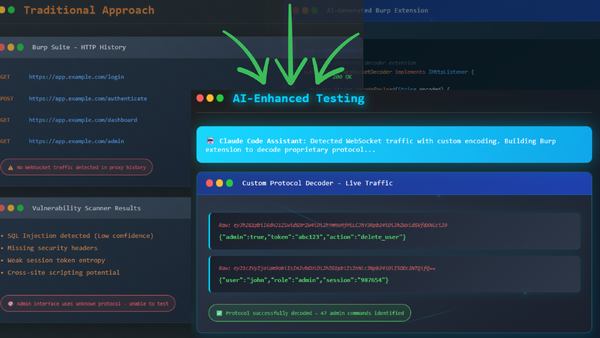From All-Hazards to Risk-Informed
The New Risk-Informed Paradigm
One of the most significant shifts for our industry in the current administration's cybersecurity approach is the strategic pivot from an all-hazards approach to a risk-informed approach for critical infrastructure protection, as outlined in the March 2025 executive order "Achieving Efficiency Through State and Local Preparedness."
This transformation represents a fundamental change in how organizations must think about their security testing, one that parallels the risk-based framework established by the EU's Digital Operational Resilience Act (DORA). While DORA initially affected only European financial institutions, the administration's shift in approach signals these principles are gaining traction in US cybersecurity policy. Both frameworks recognize a crucial reality: attacks targeting critical infrastructure represent some of the most probable and potentially disruptive scenarios organizations face today.
For security professionals, particularly those conducting penetration tests, this convergence of regulatory methodologies demands new processes. Testing must evolve beyond cataloging theoretical vulnerabilities to simulating the specific threats that pose genuine risk. By aligning with both DORA's threat-led testing requirements and the administration's directive to channel resources toward significant risks, organizations can simultaneously enhance their security posture while streamlining compliance obligations.
What This Means for Security Testing
The implications of this precision-focused approach transform how security testing must be conducted and evaluated. The shift demands a fundamental rethinking of penetration testing priorities and methodologies to align with the more specific, and bluntly better, focus on targeting resources where they matter most.
Traditional penetration testing often aims to find every possible vulnerability across the environment or prove that a “cool” hack is possible. However, under the precision-focused paradigm, testing must now prioritize scenarios representing the most likely and impactful threats the target organization faces. Security professionals need to adjust their approach in several key ways:
- Preparation is key - Testers must communicate with the target before testing to understand the risks the organization actually face
- Target critical assets first – Focus testing resources on systems that would cause the most damage if compromised
- Simulate realistic attacks – Design test scenarios that mirror current threat actor tactics rather than theoretical possibilities
- Measure impact, not just vulnerability count – Document how findings could affect core business operations
With critical infrastructure being a primary focus of the administration's directive, testing of these systems will receive heightened attention and potentially increased resources. Organizations in sectors like energy, water, transportation, and communications must ensure their testing programs reflect this emphasis. Additionally, penetration test reports now need to clearly connect technical findings to business impact, providing risk-based recommendations that help leadership make informed decisions about security investments.
Secure Ideas' Risk-Informed Testing Solutions
At Secure Ideas, our penetration testing services align with this new risk-informed mindset. Our advanced testing methodologies are specifically designed to help organizations meet the challenges of today's digital battleground and comply with the changing regulatory environment.
Threat-Led Penetration Testing
Our Threat-Led Penetration Testing (TLPT) service simultaneously complements the administration's precision-focused security strategy while fulfilling regulatory requirements for financial institutions under the Digital Operational Resilience Act (DORA). Unlike traditional penetration testing, TLPT is based on real-world attack scenarios and current threat intelligence, making it both a strategic security enhancement and a compliance necessity for financial sector organizations facing heightened regulatory scrutiny.
This approach:
- Simulates attacks from specific threat actors relevant to your industry
- Employs the actual tactics, techniques, and procedures (TTPs) used by these actors
- Provides deeper insight into how well your defenses would perform against likely threats
The value of TLPT in this type of vulnerability impact focused environment is its ability to strategically align resources on the threats that matter most to your organization, rather than theoretical vulnerabilities that may never be exploited. This exercise goes beyond the mundane surface level exploits and uncovers actionable insights against current threats.
Assumed Breach Penetration Testing
Alongside our threat-led approach, our Assumed Breach methodology addresses a critical reality in today's cybersecurity environment: the question is often not if you will be breached, but when.
Assumed Breach testing provides a stark look at what happens after a successful compromise occurs—something that organizations often overlook in their security planning. Rather than focusing solely on preventing initial access, this methodology demonstrates the actual aftermath of common attack vectors like successful phishing campaigns, compromised credentials, or insider threats. By starting with a compromised endpoint or user account, we can reveal the cascading failures and security gaps that attackers exploit once they've gained that initial foothold.
This testing:
- Begins with the premise that an attacker has already gained initial access to your environment
- Simulates lateral movement techniques used by actual threat actors
- Assesses how far an attacker could move through your network before being detected
- Evaluates your detection and response capabilities against active threats by incorporating blue teams
- Identifies what sensitive data and systems could be compromised
- Reveals the real-world impact of security control failures
Why stretch diminishing security budgets across countless theoretical scenarios or broad-spectrum social engineering attempts? With funding stripped and budget cuts, organizations are faced with increasingly complex choices about resource allocation. Security leaders are turning to Assumed Breach testing for its concentrated value proposition and insights post-compromise. Rather than blindly reinforcing every potential entry point, organizations can make informed decisions about which defenses genuinely reduce business risk when breaches inevitably occur.
Adapting Your Testing Program for the New Paradigm
Aligning your penetration testing program with the administration's strategic initiatives requires a calculated shift in how you plan and execute your security assessments. A good place to start is conducting a thorough risk assessment with your stakeholders to identify your most valuable assets, the threats most likely to target them, and what a successful attack might cost your organization. This assessment should be the foundation for all your testing activities.
Within this probability-weighted security structure, detection and response capabilities deserve special attention. Your testing should evaluate not just whether vulnerabilities exist, but how well your organization can identify and contain active threats. Ask yourself:
- How quickly can we detect malicious activity?
- Do we know what actions to take when we find it?
- Are our response procedures actually effective?
Finally, ensure that your testing reports clearly describe findings in terms of business risk, not just technical details. Leadership needs to understand what a vulnerability means for the organization to make informed decisions about where to invest limited security resources.
Taking Aim: Precision Testing for Real-World Risk
In summary, the Trump administration's shift from generic blanket coverage to strategic prioritization demands that security testing likewise evolve beyond theoretical exercises into practical defense blueprints. Secure Ideas' Threat-Led and Assumed Breach methodologies stand at the forefront of this transformation, replacing outdated "scan everything" approaches with precision assessments calibrated to your specific threat profile. These specialized services cut through the noise of hypothetical vulnerabilities to reveal genuine attack paths that determined adversaries could exploit tomorrow. The intelligence gathered forms the foundation for targeted investments—directing resources precisely where they deliver maximum protection. Organizations that thrive in this new landscape will be those who acknowledge perfect prevention is impossible and instead build resilience against the threats that matter. Partner with Secure Ideas to transform your security program from exhaustive to precise, from reactive to strategic, and from hopeful to confident.
Want to learn more about how Secure Ideas can help you adapt to these changes? Contact Us today to discuss our Threat-Led and Assumed Breach penetration testing services.
.jpg)

